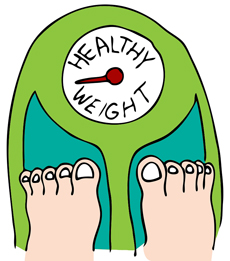How to Improve Fitness for Beginners
Understanding Fitness Fundamentals
Fitness is a state of health and well-being that involves more than just the ability to run long distances or lift heavy weights. It encompasses several components, each crucial to maintaining physical and mental health:
- Cardiovascular Fitness: This refers to the ability of your heart, blood cells, and lungs to supply oxygen-rich blood to the working muscle tissues and the ability of these muscles to use oxygen to produce energy for movement. This type of fitness is improved through activities that raise your heart rate, such as jogging, swimming, and cycling.
- Muscular Strength and Endurance: Strength refers to the ability of a muscle to exert force for a brief period, while endurance is the ability of a muscle to continue exerting force without fatigue. Regular strength training and weight lifting can enhance both.
- Flexibility: This is the range of motion available at a joint. Flexibility is improved with activities that stretch the muscles, such as yoga and static stretching exercises.
- Body Composition: This refers to the amounts of muscle, fat, bone, and other vital parts of your body. A healthy body composition, often measured via BMI (body mass index) or body fat percentage, significantly impacts overall fitness and health.
Why is Fitness Important?
- Disease Prevention: Regular physical activity helps prevent a range of chronic diseases including cardiovascular disease, diabetes, cancer, hypertension, obesity, depression, and osteoporosis.
- Improved Quality of Life: Being fit can enhance your quality of life significantly. It can improve your ability to do everyday activities, slow down the aging process, and even extend your lifespan.
- Mental Health Benefits: Exercise releases endorphins, which create feelings of happiness and euphoria. Fitness activities can help alleviate symptoms associated with depression, anxiety, and stress.
- Enhanced Cognitive Function: Regular physical activity and proper diet can improve brain function across all ages. This includes better learning, thinking, performance, and judgment skills.
- Strength and Flexibility: Maintaining muscle strength and flexibility with age is crucial as it helps you maintain independence by helping prevent falls and injuries.
- Social Benefits: Engaging in group or team sports can provide a social outlet that improves your mood and mental health, and allows you to make meaningful connections with others.
Understanding these fundamentals helps clarify the importance of fitness and why it should be an integral part of everyone’s lifestyle, especially beginners looking to improve their health.
What is Fitness?
Fitness encompasses several dimensions: cardiovascular capacity, muscle strength, endurance, flexibility, and body composition. Each aspect contributes to overall health, allowing individuals to perform daily activities efficiently, manage stress, and reduce the risk of chronic diseases. Achieving fitness involves not just physical training but also incorporating balanced nutrition and mental well-being practices to support comprehensive health.
Why is Fitness Important?
Fitness is essential for several reasons:
- Health Improvement: Regular physical activity reduces the risk of heart disease, stroke, diabetes, and various forms of cancer.
- Mental Health Benefits: It helps to decrease symptoms of depression and anxiety, boosts mood, and enhances cognitive function.
- Weight Management: Helps to control weight by increasing metabolism and building muscle mass, which burns more calories than fat.
- Increased Longevity: Active individuals tend to live longer, healthier lives compared to those who are inactive.
Setting Realistic Goals
To effectively improve fitness, setting realistic and specific goals is crucial. Goals should be attainable, measurable, and tailored to one’s current fitness level, which encourages adherence and prevents discouragement.
Short-term Goals
Short-term goals are milestones that can be achieved in a few weeks to a few months and might include:
- Walking 10,000 steps a day.
- Completing a full 30-minute low-impact workout video.
- Jogging non-stop for 15 minutes.
- Attending three fitness classes per week.
These goals help build the foundation for more challenging activities, making the fitness journey progressive and structured.
Long-term Goals
Long-term goals focus on sustained improvements and adapting a healthier lifestyle for permanent benefits. These might include:
- Running a half marathon.
- Losing 20 pounds.
- Completing an advanced yoga course.
- Reducing body fat to under 20%.
- Swimming 1,000 meters non-stop.
Setting these goals requires a commitment to long-term changes and often involves both ups and downs.
Choosing the Right Exercise
Selecting the appropriate type of exercise is pivotal in successfully improving fitness. It should match the individual’s interests, physical condition, and goals.
Cardiovascular Exercises
Cardiovascular or aerobic exercises are crucial for strengthening the heart and lungs, improving circulation, and reducing risks of cardiovascular disease. Suitable beginner cardio exercises include:
- Walking: Start with a brisk 30-minute daily walk and gradually increase the pace or incline for added difficulty.
- Cycling: Low impact and can be done outdoors or on a stationary bike.
- Swimming: Excellent for those with joint issues or those looking for a full-body workout.
- Dancing: Zumba or aerobics can be fun ways to get heart-pumping.
Incorporating these exercises into a weekly routine helps beginners establish a fitness base, leading to more intense workouts as their endurance improves.
Strength Training Exercises
Strength training is essential for building muscle, increasing strength, and boosting metabolic rate, which helps in burning more calories. It also strengthens bones, aids in weight management, improves balance, and supports mental health.
Benefits of Strength Training
- Increases Muscle Mass: Muscle mass naturally decreases with age, but strength training can help reverse this trend.
- Boosts Metabolism: More muscle mass means a higher basal metabolic rate, which means more calories burned throughout the day, even at rest.
- Improves Bone Density: Regular strength training increases bone density and reduces the risk of osteoporosis.
- Enhances Mental Health: It can alleviate symptoms of depression and anxiety and improve cognitive function.
- Supports Daily Activities: Stronger muscles improve balance and coordination, reducing the risk of falls, which is particularly important as we age.
Beginner-Friendly Strength Training Routines
For beginners, it’s important to start with basic exercises that don’t require complex skills or heavyweights. Here are some effective exercises:
- Bodyweight Exercises: Squats, push-ups, and lunges can be done anywhere and build foundational strength.
- Resistance Bands: These provide resistance when stretched, offering a way to build strength without heavy weights.
- Free Weights: Dumbbells and barbells are great as you progress. Start with lighter weights to ensure proper form.
- Machines: Use machines to help learn proper form and reduce the risk of injuries.
Beginners should aim for 2-3 strength training sessions per week, focusing on major muscle groups and ensuring rest days in between to allow muscles to recover.
Flexibility Exercises
Flexibility exercises are vital for maintaining joint range of motion and reducing the risk of injuries. They can also improve posture, reduce back pain, and alleviate stress.
Types of Stretching and Their Benefits
- Static Stretching: Involves extending a muscle to its fullest and holding it for 20-30 seconds. Ideal for cooling down after a workout to help with muscle recovery.
- Dynamic Stretching: Involves active movements where joints and muscles go through a full range of motion. These are used as part of a warm-up to prepare the body for physical activity.
- Ballistic Stretching: Uses the momentum of a moving body or a limb in an attempt to force it beyond its normal range of movement. Not recommended for beginners due to the risk of injury.
- PNF Stretching: Proprioceptive Neuromuscular Facilitation involves both stretching and contracting the targeted muscle group and is one of the most effective forms of stretching for improving flexibility.
Incorporating a variety of stretches into regular fitness routines is crucial for preventing muscle imbalances and promoting muscle health.
Nutrition and Fitness
Proper nutrition is integral to fitness; it supports exercise routines, improves performance, speeds up recovery, and helps manage weight.
Macronutrients
- Proteins: Essential for muscle repair and growth. Include sources like poultry, fish, dairy, legumes, and nuts.
- Fats: Needed for energy, hormone production, and protecting organs. Healthy sources include avocados, nuts, seeds, and olive oil.
- Carbohydrates: The body’s main energy source. Opt for whole grains, fruits, and vegetables rather than sugary foods and refined grains.
Essential Vitamins and Minerals
- Calcium and Vitamin D: Important for bone health. Found in dairy products, leafy greens, and fortified foods.
- Iron: Crucial for forming red blood cells, which carry oxygen to the muscles. Rich sources include red meat, beans, and fortified cereals.
- Magnesium: Helps with muscle contraction and relaxation. Found in nuts, seeds, whole grains, and leafy green vegetables.
- Potassium: Aids in muscle function and helps balance fluids in the body. Available in bananas, potatoes, and dairy.
Balancing these nutrients is key to fueling physical activities and supporting overall health.
Staying Motivated
Tracking Progress
Keeping a fitness diary or using an app to track your progress is highly motivating. Regularly seeing improvements, whether in physical measurements or performance, can significantly boost your motivation.
Community Engagement
Joining a fitness class or group can provide the social support needed to stay on track. Community support provides not only motivation but also accountability, which is often a key driver of success.
Overcoming Common Challenges
Fatigue
Initial phases of a fitness routine can be physically taxing. It’s important to ensure adequate sleep, nutrition, and recovery time.
Lack of Progress
Plateaus are common in fitness journeys. Changing up your routine or increasing the intensity can help overcome these stalls.
Conclusion
Starting your fitness journey is an exciting, albeit challenging, experience. Setting clear, realistic goals, choosing the right types of exercise, maintaining proper nutrition, staying motivated, and dealing with challenges are all crucial steps. Stick with your plan, and gradually, you will see your fitness level improve.
FAQs
- What is the best time of day to exercise?
- The best time is one that fits your schedule consistently. Morning, noon, or evening are fine as long as you can stick with it.
- How often should I change my workout routine?
- It’s advisable to change your routine every 4 to 6 weeks to keep your body challenged and prevent plateaus.
- What should I eat before a workout?
- Eat a light meal or snack that includes carbohydrates and protein about an hour before exercising to fuel your session.
- How do I avoid injuries when starting out?
- Start slowly, learn proper form, and gradually increase the intensity of your workouts.
- Can I exercise every day as a beginner?
- It’s important to allow time for rest and recovery, so aim for 3-5 days per week initially.





